In conjunction with the increasing popularity of ‘movement’ in the world of ‘training’, I see a lot more coaches prescribing and praising the Jefferson Curl. Many of these top S&C and gymnastics coaches are describing the exercise as a great hamstring stretch, to which I must disagree, for the following reason(s):
– The hamstrings attach on the ischial tuberosity and the lower leg. For a full stretch, it is therefore necessary to lock the knee completely and have an anteriorly tilted pelvis.
– In a Jefferson Curl, the pelvis naturally posteriorly tilts somewhat, which moves the stress from the hamstrings to the lower back
– Any stretch in the hamstrings in the Jefferson Curl is thus secondary to the movement and stretch/stress to the lower back
The solution
In the video below I demonstrate a Jefferson Curl and compare it to a snatch grip (for increased ranged of motion) stiff-legged deadlift. In the deadlift the pelvis is anteriorly tilted, and in the Jefferson Curl the pelvis is more posteriorly tilted. The deadlift will lengthen the hamstrings a lot more, and thus be the superior choice of exercise for the person wanting to stretch their hamstrings. Furthermore, the load is now no longer limited by the high degree of flexion in the lower back, and thus the load can be increased to the tolerance of the hamstrings. So we do get a win-win effect in the stiff-legged deadlift of increased range of motion AND strength in this range of motion to the hamstrings.
Now is the Jefferson Curl a bad exercise? No. Not at all. But don’t mistake it for a superior hamstring stretch. The Jefferson Curl in my point-of-view, based on the above facts (haha), is primarily limited by and thus stimulating/strengthening the lower back through high degrees of spinal flexion. This is great for bulletproofing the back, and combined with long range of motion stiff-legged deadlifts you really do have a winning combo of flexible and strong hamstrings and lower backs. A small technique que for the Jefferson Curl (from here on JC) by the way: even though it is not a superior hamstring stretch, some people are so stiff in their hamstrings, that they cannot articulate through the lower back, in the JC. In these cases a small knee bend should be allowed, so the main target of the exercise, the lower back, can articulate. At the same time, hamstrings can be worked via deadlifts to remedy the issue.
To progress the deadlift, you can start with a regular grip, and elevate the feet or move out the grip (or both, as in the video), once your flexibility allows you to touch the ground with the plates. Since the focus here is primarily flexibility, the anterior pelvic tilt should be exaggerated and kept throughout the entire range of motion. If the purpose is strength, obviously a more neutral spine would be preferred.
With regards to weight, in the stiff-legged deadlift with extreme range of motion somewhere around 20-30% of your regular stiff-legged deadlift load should suffice. In the JC just make sure to start light enough that your spine can tolerate it, and work up gradually.
Best of luck with your stretching and strengthening
/Rasmus Thorø
